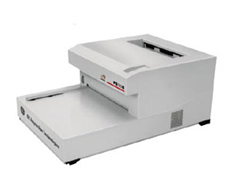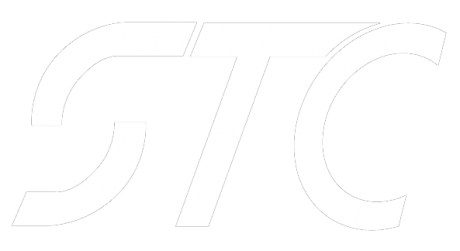 STC srl ha implementato un servizio di digitalizzazione film radiografici in conformità alla norma UNI EN 14096-2 classe DS – DB – DA
STC srl ha implementato un servizio di digitalizzazione film radiografici in conformità alla norma UNI EN 14096-2 classe DS – DB – DA
Il servizio si basa sull’utilizzo di uno speciale scanner per radiografie in applicazioni NDT, in grado di fornire prestazioni di digitalizzazione di fascia alta.
Tutti i formati di pellicola standard possono essere digitalizzati, fino ad una larghezza di 35 cm (14 in.), senza limitazione di lunghezza in qualsiasi risoluzione compresa tra 50 micron e 500 micron. Il digitalizzatore è in grado di gestire l’intera gamma di densità (D = 0 fino a 4,70 D) in un campo di lavoro con la sensibilità al contrasto richiesto, in modo da soddisfare i requisiti della classe DS secondo EN 14096 -2. ( in allegato tabelle )
STC Ltd. has implemented a service of digitization of NDT radiographic films in compliance with UNI EN 14096-2 class DS – DB – DA
The service is based on the use of a special scanner for radiographs NDT applications, capable of providing high-end digitization.
All’ standard film formats can be digitized, up to a width of 35 cm (14 in.), Without limitation of length in any resolution between 50 microns and 500 microns. The digitizer is able to handle the full range of density (D = 0 up to 4.70 D) in a working range with contrast sensitivity required, so as to meet the requirements of class DS according to EN 14096 – 2 .
Digitization quality classes
All radiographic film digitization systems are subdivided into 3 quality classes DS, DB and DA
DS – the enhanced technique which performs the digitization with an insignificant reduction of signal-to-noise ratio and spatial resolution.
Application field: digital archiving of films (digital storage).
DB – the enhanced technique, which permits some reduction of image quality.
Application field: digital analysis of films, original radiographic films have to be archived.
DA- the basic technique, which permits some reduction of image quality and further reduced spatial resolution.
Application field: digitalis analysis of films, original radiographic films have to be archived.
Each radiographic film digitization system for NDT applications shall be identified with all working ranges of optical densities. it shall be classified by the quality class corresponding to Table 1 and the maximum MTF 20% value, corresponding to EN 14096-1, which can be performed by this system.
EXAMPLE A digitization system of class DS 4,2 (scanner class DS (see Table 1), maximum MTF 20 % = 4,2 lp/mm (see Table 2)) can be applied for archiving of radiographs taken with X-rays above 200 KeV or y-rays and can be applied for all class DB and DA digitization tasks.
EN 14096 -2
Minimum requirements for film digitization quality classes
- Density range and working ranges of the film digitization system
Table 1 defines the minimum density range of the radiographic digitization system. In this density range the digitizer shall provide a density contrast sensitivity ∆DCS with ∆DCS < 0,02 Depending on the construction of the digitiser, this density range can be split into several working ranges.
The minimum digital resolution is given for devices converting the digital value proportional to the optical density. lf
the digital value is converted proportional to the light intensity, the digital resolution has to be increased at least by 2 additional bits
Table 1 -Minimum density range of the radiographic digitization system with a minimum density contrast sensitivity
| Parameter | Class DS | Class DB | Class DA |
| Density rangea DR | 0,5 to 4,5 | 0,5 to 4,0 | 0,5 to 3,5 |
| Digital resolution in bit | >12 | >10 | >10 |
| Density contrast sensitivity
∆DCS within DR |
> 0,02 | > 0,02 | > 0,02 |
| a This density range may be splitted into separated working ranges. | |||
- Minimum spatial resolution of film digitization systems
Due to the energy dependence of the inherent unsharpness of industrial X-ray film systems the following parameters (see Table 2) shall be observed:
Table 2 – Minimum spatial resolution of film digitization systems
| Energy | Class DS | Class DB | Class DA | |||
| keV | Pixel size
µm |
MTF 20%
lp/mm |
Pixel size
µm |
MTF 20%
lp/mm |
Pixel size
µm |
MTF 20%
lp/mm |
| < 100 | 15 | 16,7 | 50 | 5 | 70 | 3,6 |
| >100 to 200 | 30 | 8,3 | 70 | 3,6 | 85 | 3 |
| >200 to 450
Se 75, Yb-169 |
60 | 4,2 | 85 | 3 | 100 | 2,5 |
| Ir 192 | 100 | 2,5 | 125 | 2 | 150 | 1,7 |
| Co 60, >1 MeV | 200 | 1,25 | 250 | 1 | 250 | 1 |
NOTE 1 For the normal! check corresponding to EN 14096-1, the MTF 20 % value can be determined by the converging spatial resolution targets.
NOTE 2 Due to possible aliasing, the converging spatial resolution targets can give less accurate values than MTF measurements.
NOTE 3 For energies lower than 70 keV the spatial resolution of the radiographic film can be better than the scanner resolution required by the class DS 16,7. In this case the spatial resolution of the scanner should be adapted to the film resolution, or the original radiographic film should be archived.
- Digitization class depending on the radiographic testing class
The standards ISO 5579, EN 444, EN 1435 or EN
Radiographs taken according to these standards shall be digitized corresponding to Table 3.
Table 3 -Minimum digitization class depending on the radiographic testing classes A and B, if radiographs are taken on the basis of ISO 5579,EN 444, EN 1435 or EN 12681
|
wall thickness [mm] steel |
Class DS |
Class DB |
Class DA |
| < 5 | B | A | – |
| > 5 | B | B | A |
NOTE For the detection of cracks and fine imperfections Class DB or better should be used.
After digitization process all required image quality indicators shall be visible in the digital image as on the original radiographic film.





